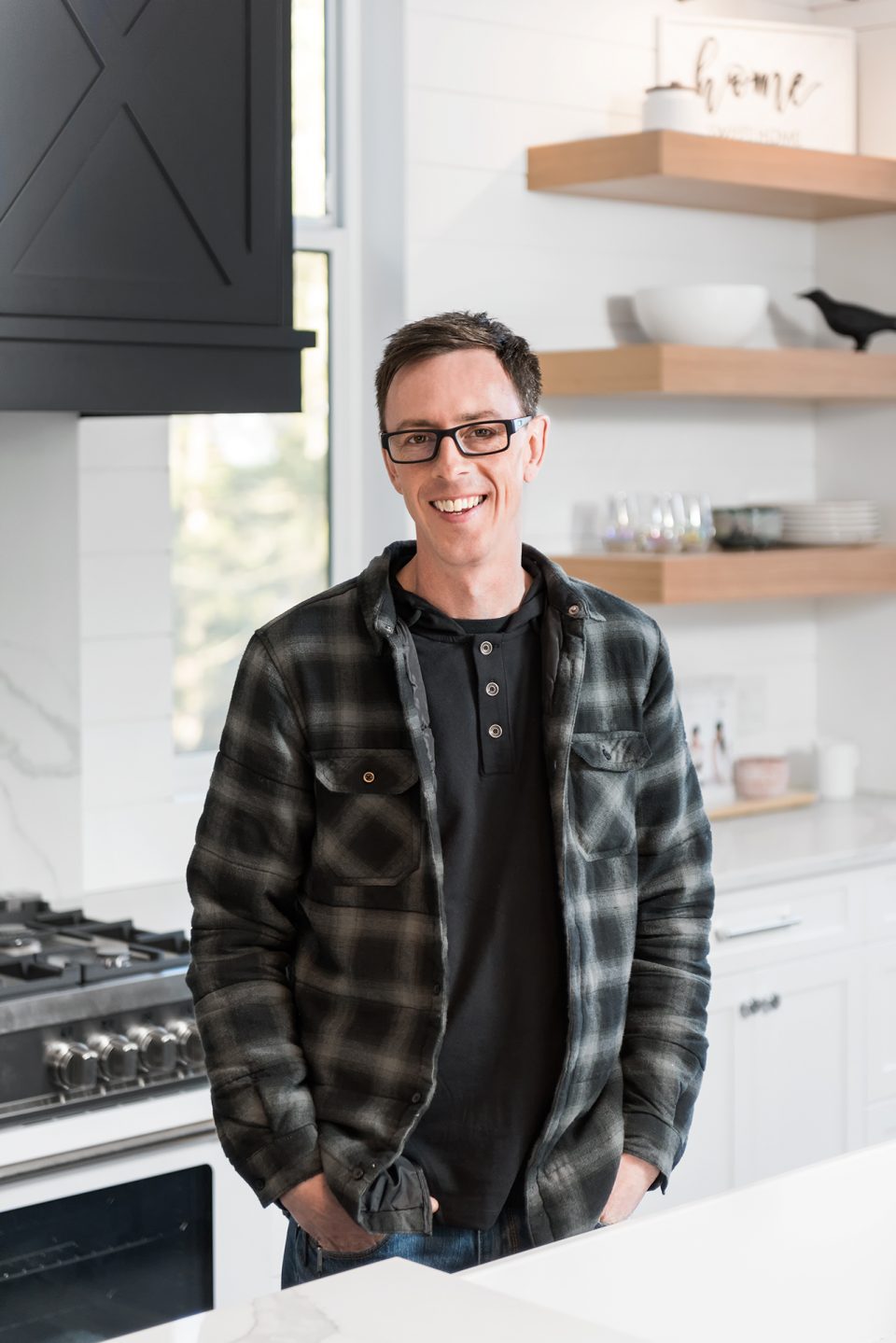Words by Michelle Heslop. Photos by Jody Beck.
Tell us a little bit about your journey to starting Raven Valley Kitchens. Raven Valley Kitchens has had an organic evolution. I knew very early on in my career that I had an entrepreneurial spirit. I spent many years perfecting my technical skills through intensive studies in Wood Manufacturing Engineering, at the Woodworking Centre of Ontario, nearly two decades ago. After graduation, I gathered experience in a number of successful cabinetry and millwork companies where I progressed from cabinetmaker to production manager and eventually, general manager for a large operation.
In 2012, I partnered with a former employer to start the first version of Raven Valley. In 2016, we moved our facility to Cobble Hill where we remain today. Goal setting for this year centres on refinement. Raven Valley is now well off the ground and has established a sound reputation and a loyal network of repeat clients, builders, and contractors. I have built this business completely on referral. Our clients have been such amazing advocates for the success of Raven Valley. This year our focus is on seeking out additional talent, showcasing our work, and developing professionally in all facets to meet and exceed the expectations of our discerning clients.
Is there a story behind your company name? Culturally and historically, the raven is symbolic of creativity and knowledge. The lines in the raven in our logo depict origami and symbolize transformation. Creativity, knowledge, and transformation are core values that are deeply embedded within the company. It is our focus to provide a client experience that is synonymous with learning, engagement, and excitement. We seek out clients who want to collaborate in the creative process and who see us as the experts that can guide their vision to reality.
Can you describe your design process? The team at Raven Valley provides a completely custom end-to-end experience. Initially, we meet with homeowners and builders and begin with design plans in the months leading up to breaking ground. I am still personally involved in reviewing all plans and create almost all of the designs. My approach to design focuses on kitchen functionality, aesthetics, and symmetry. We produce detailed renderings and full CAD drawings, flat lays of materials, and a project book detailing all choices made in the design process. Once we have finalized all renderings, custom colours, finishes, and the project budget, we begin the build while keeping our sights on timelines.
Have you learned any valuable lessons along the way? I have learned a lot about the power of people. Building relationships with our clients alongside a well-executed product is critical to the foundation of our company. When you deliver what you set out to do, people really champion the work, and that makes all the difference to your company’s reputation and longevity.
What does ‘commitment to quality materials’ mean to your craft? Our goal is to make a product that lasts a lifetime. This commitment to longevity is built into our early design process where we communicate to clients the differences in the spectrum of materials and why this is key to helping them achieve a finished product they will gather in for many years to come. We won’t make something that we can’t stand behind. It also means continual professional development. Right now we are delving into sustainable materials and environmentally focused products.
Do you have any inspiring projects you are currently working on? We are currently in the middle of two very exciting new builds. Both of these projects are for young families who were both highly involved in the planning and overall aesthetic of their projects. We are passionate about this level of engagement and collaboration. Working so closely with people makes the final reveal that much more rewarding.
If your clients had to describe your work in three words, what would they be? For me, it’s not about words, it’s about creating a feeling, a reaction. I want every client to leave the experience with more than they came for: more quality, more collaboration, more care, and more detail.
What are some of the most significant changes you’ve witnessed over the last 20 years in cabinetry/millwork? The evolution of the internet has been a game-changer with social media a significant influence on client interest in design. With access to design magazines, Pinterest, HGTV… clients are incredibly design-savvy and know exactly what they want. When I first started designing kitchens, I would do all the planning and prescribe almost all the finishes because clients had very few samples to choose from.
In terms of the industry, there has been a decline in large-scale manufacturing across Canada. Twenty years ago there were a number of companies with 200 to 300 employees crafting kitchens. The influence of offshore markets has drastically changed this. Now there are more, smaller custom shops. There are also significantly fewer skilled cabinetmakers with formal education. I’m hopeful we will see a resurgence in post-secondary programs for cabinetmaking and woodworking technology in the future.
Do you have any rituals or habits in your workday that are unique to you? My team will tell you I need music playing during my workday at all times. And coffee. I need a constant flow of both. Seriously though, I need to spend more time refining my practice. This is another goal of mine for the year ahead. Responding to our growth over the past few years has meant being “all in” at every moment.
What’s the best advice you’ve been given? Never complain when there’s a lot of work to do. Embed this mantra into your team; be thankful there’s work to do. Welcome the challenges. When something becomes easy, you’re no longer growing.














